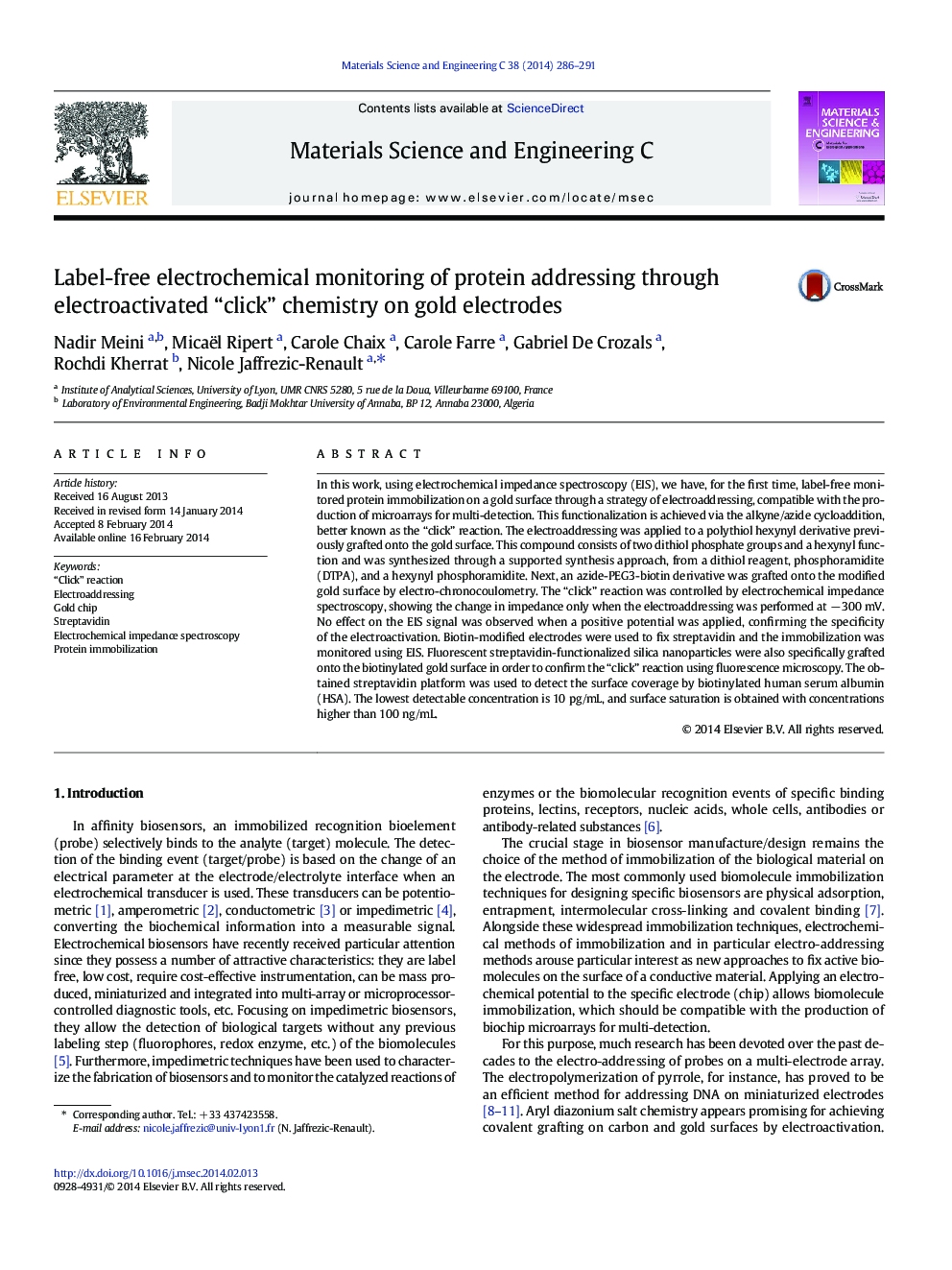| کد مقاله | کد نشریه | سال انتشار | مقاله انگلیسی | نسخه تمام متن |
|---|---|---|---|---|
| 1428842 | 1509183 | 2014 | 6 صفحه PDF | دانلود رایگان |

• A strategy for electroaddressing a gold surface is developed.
• It is applied for the first time to protein immobilization.
• Specificity of electroadressing protein is monitored using label-free EIS
• Conditions for local immobilization of HSA are determined
In this work, using electrochemical impedance spectroscopy (EIS), we have, for the first time, label-free monitored protein immobilization on a gold surface through a strategy of electroaddressing, compatible with the production of microarrays for multi-detection. This functionalization is achieved via the alkyne/azide cycloaddition, better known as the “click” reaction. The electroaddressing was applied to a polythiol hexynyl derivative previously grafted onto the gold surface. This compound consists of two dithiol phosphate groups and a hexynyl function and was synthesized through a supported synthesis approach, from a dithiol reagent, phosphoramidite (DTPA), and a hexynyl phosphoramidite. Next, an azide-PEG3-biotin derivative was grafted onto the modified gold surface by electro-chronocoulometry. The “click” reaction was controlled by electrochemical impedance spectroscopy, showing the change in impedance only when the electroaddressing was performed at − 300 mV. No effect on the EIS signal was observed when a positive potential was applied, confirming the specificity of the electroactivation. Biotin-modified electrodes were used to fix streptavidin and the immobilization was monitored using EIS. Fluorescent streptavidin-functionalized silica nanoparticles were also specifically grafted onto the biotinylated gold surface in order to confirm the “click” reaction using fluorescence microscopy. The obtained streptavidin platform was used to detect the surface coverage by biotinylated human serum albumin (HSA). The lowest detectable concentration is 10 pg/mL, and surface saturation is obtained with concentrations higher than 100 ng/mL.
Figure optionsDownload as PowerPoint slide
Journal: Materials Science and Engineering: C - Volume 38, 1 May 2014, Pages 286–291